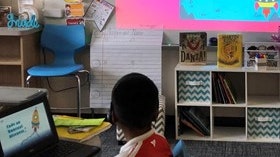Homepage
•
Learning Library
•
Blog
•
10 easy steps to start coding with Google CS First
Expand breadcrumbs
Expand breadcrumbs
- Learning Library
- Blog
- 10 easy steps to start coding with Google CS First
- Homepage
- •
- Learning Library
- •
- Blog
- •
- 10 easy steps to start coding with Google CS First
10 easy steps to start coding with Google CS First
By Vanessa Robinson
November 29, 2018








